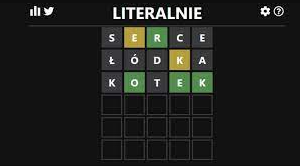Introduction: The Gateway to Your Sanctuary
The front door isn’t just a mere entry point into your home; it’s a symbolic gateway that leaves an indelible impression on guests and passersby. It serves both a functional purpose and a design statement. Over the years, main entrance modern door design has evolved dramatically, reflecting broader changes in architecture, technology, and aesthetic sensibilities.
1920s: The Era of Sturdy Wood and Intricate Glasswork
In the roaring twenties, homes often featured sturdy wooden doors with intricate glasswork. These doors served as a reflection of the era’s opulence and newfound focus on residential aesthetics. The wood, typically mahogany or oak, showcased expert craftsmanship while the glass components added a touch of elegance.
1950s: The Birth of Minimalism and Metal Accents
Come the 1950s, the era ushered in sleek, minimalist designs influenced by post-war modernism. Here, the main entrance doors started seeing metal accents, chrome finishes, and even entire doors made from lightweight aluminum. The emphasis shifted towards functionalism without sacrificing aesthetic values, leading to simpler but equally arresting designs.
1970s: Eclectic Textures and Exotic Materials
The 1970s welcomed exotic materials and textures into the fold. Think doors made from bamboo, teak, or even incorporating elements like stained glass. This was an era where designers experimented freely, and as a result, doors of this decade often showcased a mishmash of styles, serving as a vibrant focal point to any entrance.
1990s: The Embrace of Composite Materials
Advancements in technology brought about new possibilities in the ’90s, including the use of composite materials that mimicked the look of traditional wooden doors but provided superior durability and insulation. These composite doors became popular for their low-maintenance requirements and energy efficiency.
2000s: Smart Doors and Technological Advancements
The new millennium brought with it smart technology, affecting even the humble front door. From biometric scanning to smart locks, modern entrance doors began to prioritize security features, driven by technological advancements. Moreover, eco-friendly materials like reclaimed wood and recycled metal started to make an appearance, reflecting a growing global consciousness.
2020s: Customization and Personal Expression
As we venture further into the current decade, customization and personal expression reign supreme. With 3D printing technologies and custom craftsmanship more accessible than ever, homeowners are opting for bespoke door designs that reflect their personal style. Functionality, security, and sustainability are seamlessly integrated, offering a holistic approach to modern entrance door design.
Global Influences: Merging East and West
In our increasingly interconnected world, it’s impossible to overlook the influence of global design trends. Contemporary main entrance doors often incorporate design elements from various cultures, whether it’s the Japanese concept of ‘Ma’ emphasizing negative space or Mediterranean wrought iron detailing, making each door a multicultural statement piece.
Future Trends: Sustainable Practices and IoT Integration
Looking ahead, the focus on sustainable materials and smart technology is likely to continue. The integration of Internet of Things (IoT) devices for enhanced security and convenience is on the horizon, offering exciting opportunities to further revolutionize modern door designs.
Conclusion: The Ever-Changing Landscape of Door Design
The main entrance modern door design has come a long way, serving as a mirror to the architectural and cultural shifts over the decades. From sturdy wood and intricate glasswork of the 1920s to today’s high-tech, customizable options, the evolution is both fascinating and indicative of broader societal changes. As we continue to push the boundaries in design and technology, one thing remains constant: the front door will always be the gateway to our personal sanctuaries, a blend of function and form that welcomes us home.
























